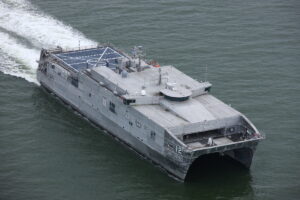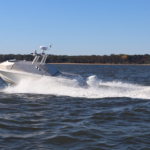
The Navy tested a set of events last month to assess autonomous capabilities integrated into the future Spearhead-class USNS Apalachicola (EPF-13), the service said July 29. The Navy said the test events, called the Unmanned Logistics Prototype trials, each increase the perception capability and behavior complexity performed by the autonomous systems. Thus far, test evolutions included point-to-point autonomous navigation, vessel handling and transfer of vessel control between manned to unmanned modes. This prototyping work aims to demonstrate a large ship,…

 By
By 










